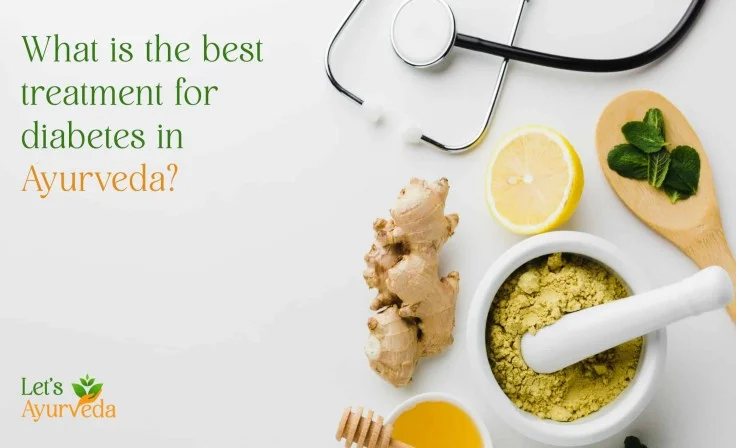Over 10% of the adult population worldwide suffers from diabetes, one of the most prevalent medical disorders. Diabetes, often called Madhumeh in Sanskrit and Ayurvedic nomenclature, can be challenging for various reasons. First of all, it has a significant impact on possible eating decisions. Second, the increase in blood sugar can cause several health issues. Diabetes is also known to have substantial effects on the brain, foot, kidneys, eyes, and cardiovascular systems.
Thankfully, various actions and recommended prescriptions can still control the illness.
What is Diabetes in Ayurveda?
Let's look at what diabetes means in Ayurveda before we explore the treatment for diabetes in Ayurveda.
Diabetes is associated with and referred to as a urine anomaly in Ayurveda. There are twenty different sorts of diabetic issues in total. Diabetes mellitus is the most prevalent type of diabetes out of those twenty.
Treatment of Diabetes in Ayurveda
According to historical literature, Ayurveda's remedies for diabetes include herbal medicines, Panchakarma therapy, its numerous procedures (Vamana, Virechana, Vasti, etc.), and many more. However, the method chosen for treatment is mainly determined by how severe the patient's disease is.
It's also important to remember that these treatments aim to increase the insulin sensitivity of type 4 glucose receptors. This reduces insulin resistance and increases insulin secretion, promoting beta-cell regeneration.
Specific information is available regarding the best Ayurvedic therapies for diabetics.
Herbal Medication
As was already noted, several herbs are thought to benefit the management of diabetes. Find a list of Ayurvedic herbs for diabetes in this area. These might aid in keeping blood sugar levels stable and controlling diabetes.
- Haldi (turmeric): It is known that the curcumin in haldi has characteristics that aid in controlling blood sugar levels. As a result, it could be able to assist in the management of diabetes.
- Ginseng
- Fenugreek
- Psyllium
- Cinnamon
- Aloe vera
- Bitter melon
- Bitter gourd (karela)
- Milk thistle
Numerous bitter-tasting herbs and fruits are on the list, as can be seen. It is thought that this bitter quality helps to keep sugar levels stable.
Panchakarma Therapy
One of the most thorough Ayurvedic treatments, panchakarma, is supposed to improve general health and assist in managing various health issues. Through five more miniature stages, it is a therapeutic procedure to detoxify the body.
Depending on the procedures selected by the Ayurvedic practitioner, the complete Panchakarma therapy can last anywhere from seven to fifteen days.
Yoga for Diabetes
Diabetes can be managed with yoga. This is primarily due to yoga's ability to control diabetes's root causes. Diabetes is mainly brought on by stress and fat. Regular yoga and meditation lower tension and inhibit the body's fat storage. There are many postures that are beneficial, including pranayam, surya namaskar, balasana, vajrasana, sarvangasana, halasana, and dhanurasana.
Individualized low-carb diets, regular yoga, physical activity, a tailored low-carbohydrate diet, and a low-stress level in daily life all contribute to maintaining an average blood glucose level.
Ayurvedic medicine for diabetes recommends dietary adjustments to help regulate blood glucose levels. The following foods should be ingested if you're receiving Ayurvedic therapy for diabetes:
- Astringent or bitter foods. Including barley, moong, and bitter gourd in the diet is advised.
- Fruits and vegetables with high fiber content should comprise a large portion of the diet.
- When cooking, you should add cardamom, cumin, coriander, and turmeric.
- 5 or 6 little meals can be consumed instead of three large ones to avoid increased blood sugar.
Herbal medicines that can help regulate blood glucose levels are used in the Ayurvedic treatment of type II diabetes. In Ayurveda, a few of the most well-liked medications are utilized to cure diabetes.






